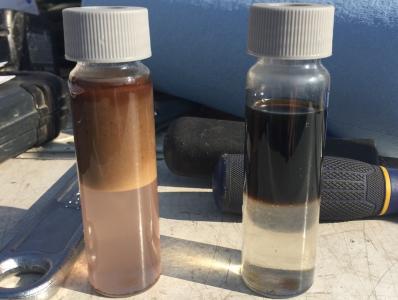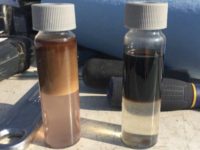Surfactant injection, an innovative remedial alternative, can increase mobilization of LNAPL and ease of capture to reduce the cost and duration of attaining a No Further Action determination.
Farallon understood that reduced mobility of weathered LNAPL had created a roadblock on the path to effective remediation. Additionally, because of the proximity of the site to the ocean, tidal influence increased the smear zone of the LNAPL at the top of the water table. Traditional or presumptive remedial alternatives that were employed included skimming, dual-phase extraction, and passive skimming, but each option failed to mobilize LNAPL and move the site toward closure. Surfactants are known to reduce surface tension between LNAPL and water and increase recoverability of LNAPL. Farallon evaluated multiple remedial alternatives in a feasibility study, and surfactant injection was approved by the oversight agency. Farallon conducted a pilot study to demonstrate surfactant injection is a feasible remedial alternative and study the aquifer characteristics at the site. Surfactant was injected into a well with LNAPL, and Farallon observed the dispersion of LNAPL into the water table as the LNAPL layer disappeared and groundwater changed color. Pumping the recovery well reduced the color of the groundwater and indicated surfactant and dispersed LNAPL had been removed. Farallon currently is preparing a full-scale surfactant injection work plan for the site for agency approval.
“The sandy soil at the site provides the perfect condition for a large capture zone from pumping. The injected surfactant will mobilize the residual and mobile LNAPL for easy recovery. Cleanup time will be reduced from years to months with this technology, which will save the client money,” said Senior Engineer Matt Nusenow, who manages the project.


